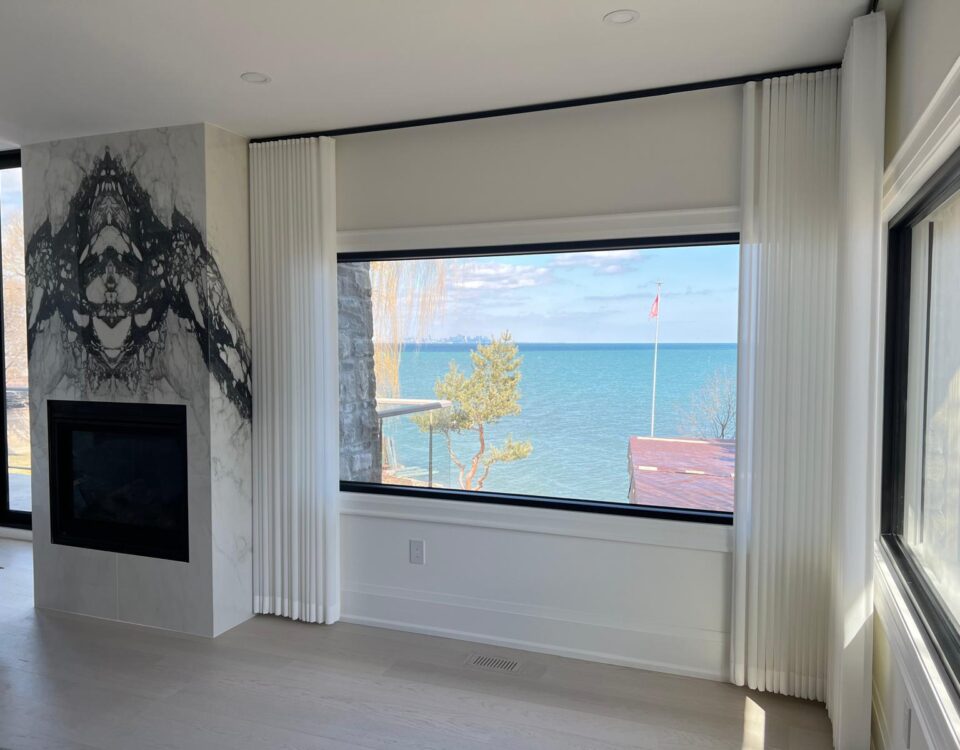
How Often Should Drapes Be Cleaned, and What Is the Best Method?
March 25, 2025
Can Zebra Shades Be Motorized?
April 1, 2025
When you’re ready to invest in custom drapery, one of the most important steps is ensuring your measurements are accurate. Whether you’re in Mississauga, Oakville, or any other area, measuring for custom made drapes is crucial to achieving a polished and professional look. Getting the right fit for your custom made curtains or drapes ensures they not only fit perfectly but also enhance your home’s aesthetic. Here’s a guide to help you measure your windows accurately for custom drapery, including tips for drapery and shades, tailored pleat drapery, and more.
Step 1: Gather the Necessary Tools
Before you start measuring your windows, make sure you have the following tools on hand:- A steel measuring tape
- A pencil and paper for notes
- A step stool or ladder (if necessary)
- A level (for accurate placement)
Step 2: Measure the Width of the Window
The first and most essential measurement is the width of your window. Here’s how to measure:- Measure the Width of the Window Opening: Start by measuring the width of the window opening itself. Measure at the top, middle, and bottom of the window, as some windows may be slightly uneven. Use the widest measurement as the width of the window.
- Add Extra Width for Fullness: Custom drapes look best when they have a generous amount of fullness. Typically, you’ll want your drapes to be 1.5 to 2.5 times the width of the window for a luxurious look. For example, if your window measures 48 inches, the total width of your drapes should be between 72 and 120 inches.
- Consider the Rod Placement: When measuring, keep in mind where you’ll place your drapery rod. For a more dramatic effect, many people place the rod higher than the top of the window, often 4-6 inches above the window frame. This helps make the room feel taller.
Step 3: Measure the Length of the Drapes
The length of your custom made drapes is crucial for the overall look. There are several different styles you can choose from, depending on your preferences:- Standard Length: For a traditional look, you may want your drapes to just brush the floor. Measure from the top of your window (or the top of the rod if it’s mounted above the window) to the floor.
- Puddle Length: If you want a more luxurious or dramatic look, you can have your drapes “puddle” on the floor. To achieve this, measure the length as usual, then add an extra 6 to 12 inches to the bottom for a longer, flowing effect.
- Just Above the Floor: Some people prefer their custom drapes to fall just above the floor, creating a cleaner look. Measure from the top of the window or rod to about 1 inch above the floor for this look.
Step 4: Measuring for Custom Drapery Hardware
Your drapery hardware is just as important as your fabric choice. If you’re installing custom drapery hardware, it’s essential to measure where you want the brackets to go. Start by determining the placement of your curtain rod and the distance from the window frame. For custom drapery & blinds by us, the ideal placement for a curtain rod is about 3-4 inches above the window frame for a clean, high-end look. Make sure the rod extends beyond the window frame by at least 6-12 inches on either side to ensure the drapes open fully without blocking any light. If you’re installing Hunter Douglas drapes, the mounting system is often designed to be versatile, but accurate measurements are still key.Step 5: Measuring for Special Windows
For windows with unique shapes, such as angled windows or arched windows, measuring can be trickier, but it’s definitely possible with the right approach.- Angled Windows: To measure for curtains angled windows, you’ll need to measure both the top and bottom width of the window. From there, decide whether you want a tailored pleat drapery or another type of treatment. Custom drapery treatments can be adapted to fit unique shapes and will give your windows a one-of-a-kind look.
- Arched Windows: Custom made drapes are a great solution for arched windows. Measure the width at the base of the arch, and then measure the height from the top of the arch to the floor. Custom drapery sheers can soften the look of arched windows while allowing natural light to filter through.




